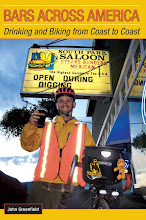
[At Friday's Bike to Work Rally, seated from left: Mayor Richard M. Daley; Greg LeMond, the first American to win the Tour de France; Andy Clarke, Executive Director of the League of American Bicyclists; unidentified; Alex Wilson, Director of West Town Bikes, who received an Individual Achievement Award from the mayor.
Last Friday, June 13, Mayor Richard M. Daley addressed a crowd of hundreds of bicyclists at Chicago’s annual Bike To Work Rally in the mayor's eponymous plaza. Notably, Daley memorialized cyclist Clinton Miceli, 22, who was killed that Monday when an SUV driver opened a door Miceli’s path, throwing him into traffic. The following is the mayor's speech, edited a bit for clarity.
Good morning. Thank you very much Ginger, Rob, from Channel 5 for those kind remarks. Thank you for MC-ing. Let’s give them a round of applause. Greg LaMonde, a hero for all of us, world-champion cyclist, three-time Tour de France winner. Let’s give him a round of applause. Welcome to Chicago.
I want to thank all those who are participating in the Bike to Work Rally, all of those that made a difference here over many, many years in making this city a bike-friendly city. All the advocacy groups, all the cyclists, all the bike shops, all over the city that have really made the city what it is today.
Like any thing else, riding a bike is dangerous. At this time I’d like to have a moment of silence in memory of a young man, Clinton Miceli, who unfortunately was killed this week in a collision with a car. Let’s just have a moment of silence for Clinton. [Five seconds of complete silence.] Amen.
With Clinton in mind I ask everyone operating a motor vehicle or bicycle, please obey all safety laws – share the road. Use common sense when you open the door of a car. This has become a more bike-friendly city. So I ask anyone in a car: when you park your car please use common sense in opening the door because you’re going to save someone’s life from serious injury.
This is a great rally because we’re really embracing what we’ve done for many, many years in this city: alternatives to vehicles. You’ve been environmentalist, those who’ve biked to and from work and on weekends. Bicycle riders were doing this long before gas prices started going up. Every day you help save the environment.
I want to thank all those who have participated in this wonderful rally, all the sponsors, all the government agencies: Department of Transportation, CTA, the Park District and those who have participated with us in regards to this bike rally.
What we’re trying to tell people is get informed going to and from work, working with parking plots, developers and making it bike-friendly going to and from work. We hope to build more bike stations here in the city of Chicago, not only in the downtown area but all over the city.
I also want to thank the CTA for their great response in regards to a bike-friendly CTA system. Public transportation, walking and biking, it all goes together. I just want to congratulate everyone being here, those who ride their bikes to work every day, those who enjoy it, this is a wonderful family occasion.
One of the things that we’ve been talking about and that we have now coming to the city of Chicago is a criterium that is coming July 27 on a Sunday. Some of the world’s greatest cyclists will take part for the first time in Grant Park. I hope that there will be many of these in the future.
[I’d like to see] more bike trails, especially longer ones in the downtown. I hope to get 50 miles, using the railroad tracks, that’s my dream some day, so all of us don’t have to go out to other states to do the 50-mile or 100-mile bike rides that many of us want on the weekends. I just want to thank all of those who participated and worked with us to make this bike rally so friendly. Have a wonderful day - go biking. Thank you.










